- Administrator
- Albums and Singles
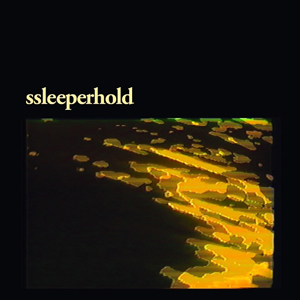 SSLEEPERHOLD's José Cota initially gained attention as part of the now dissolved Medio Mutante, but here he is working strictly solo. Still utilizing a largely synth based template, he touches upon abrasive late 1980s industrial, laconic soundtrack-like ambience, and a bit of everything between in these eight instrumental songs.
SSLEEPERHOLD's José Cota initially gained attention as part of the now dissolved Medio Mutante, but here he is working strictly solo. Still utilizing a largely synth based template, he touches upon abrasive late 1980s industrial, laconic soundtrack-like ambience, and a bit of everything between in these eight instrumental songs.
Cota sticks to a mostly basic arrangement across this LP, usually relying upon a rigid drum machine, electronic bass line, and bits of melodic synth or tape manipulation to bring in some less predictable elements.On the opening title piece, the hollow and distorted drum machine and brittle bass sequence have the expected rigidity, but are broken up by shards of noisy electronics and processed tapes to put a distinctly more grimy edge on such sounds.
"F.I.S.T.," with its metal edged reverberated synth and clattering drum machine, instantly called to mind Corrosion/Disorder era Front Line Assembly, in the best possible way.The militaristic and aggressive programming paired with the unpredictability of the older electronics was a definite throwback to that era that time and technology has seemingly left behind."Beatsslave" has a similar sense to it, albeit with a glassy synth line makes it a bit more of a melodic experience.The fast paced, testy drum machine and frequent build up/tear down structure adds to that aggressive sense, however.
"Timeghosts" puts these same building blocks together in a very different way, however.The synthesizers take on an almost regal, dramatic sound atop a squelchy bassline, and the result lies somewhere between Tangerine Dream and a cop movie soundtrack."Dreamwaves II" has a similar approach, although its deliberately 1980s sound feels firmly tongue in cheek, putting together the closing credits theme to a Miami Vice spinoff that never happened.
Cota's liberal use of effects and tape trickery puts an idiosyncratic, unpredictable edge into a sound that more and more artists are latching on to.Rather than locking himself into the initially unbending minimal wave sound and structure, his use of improvised and raw elements goes a long way.The result is a record that is closer to the artists so many are trying to emulate, rather than ending up like one of the many that time forgot.
samples:
 
Read More
- Administrator
- Albums and Singles
 Most of my familiarity with Bullock’s work involves his compositions for contrabass, performed in his own distinctive style with the results being anything but conventional. On this LP, however, he puts the emphasis on modular synthesizers and electronics, with the bass and field recordings appearing on half of the album and even then through heavy processing. The result is a unique pair of works that both show his strength in composition as well as improvisation.
Most of my familiarity with Bullock’s work involves his compositions for contrabass, performed in his own distinctive style with the results being anything but conventional. On this LP, however, he puts the emphasis on modular synthesizers and electronics, with the bass and field recordings appearing on half of the album and even then through heavy processing. The result is a unique pair of works that both show his strength in composition as well as improvisation.
While "Trompettes Marines" is based off of a live improvisation from 2010, the version here is an entirely new and fully realized recording that blends all of the elements Bullock works with into a single complex composition.Initially heavily focused on wispy bits of sound that move like passing spirits, the abstract tones begin to gel together more structured and almost melodic, slowly building the depth of the piece.
This calm is broken by what sounds like amplified and processed cars passing, leading to a dissonant rush of sound for a brief interval before settling down again peacefully.Sampled vinyl crackling appears to concoct a more intimate, texture laden sound about midway through.Towards its conclusion, recording of the seaside and the use of contrabass and electronics conjure up a markedly foggy, maritime like ambience that is only missing the smell of sea air and the cold, blustery winds of the New England coast.
In comparison, the title composition on the B side of the record is a bit more skeletal and sparse, heavily utilizing sustained analog electronic tones throughout.Which makes perfect sense, being that the piece was built mostly from a self-generative modular synth patch with very little direct input from Bullock after the initial set up. The analog waves mimic bowed strings well, and the occasionally sharp, shrill outburst or passage highlight the delightfully unpredictable nature of non-digital technology.Between this and the fact that Bullock did little in the way of post-production or mastering after the fact makes this all the more impressive.It may seem a sparse and more loosely structured in comparison, but considering how it was created, it is still a very impressive feat.
I must admit to favoring "Trompettes Marines" a bit more for general listening purposes, as its diverse structure and more complex instrumentation shine.Bullock’s merging of such distinct sound sources (purely electronic, traditional, and incidental sounds) come together splendidly."Figures Without Ground" is especially impressive given how it was created, but its sparser, more stripped down nature makes for less to dissect.Both sides of this record are rich with subtlety and understated brilliance.
samples:
 
Read More
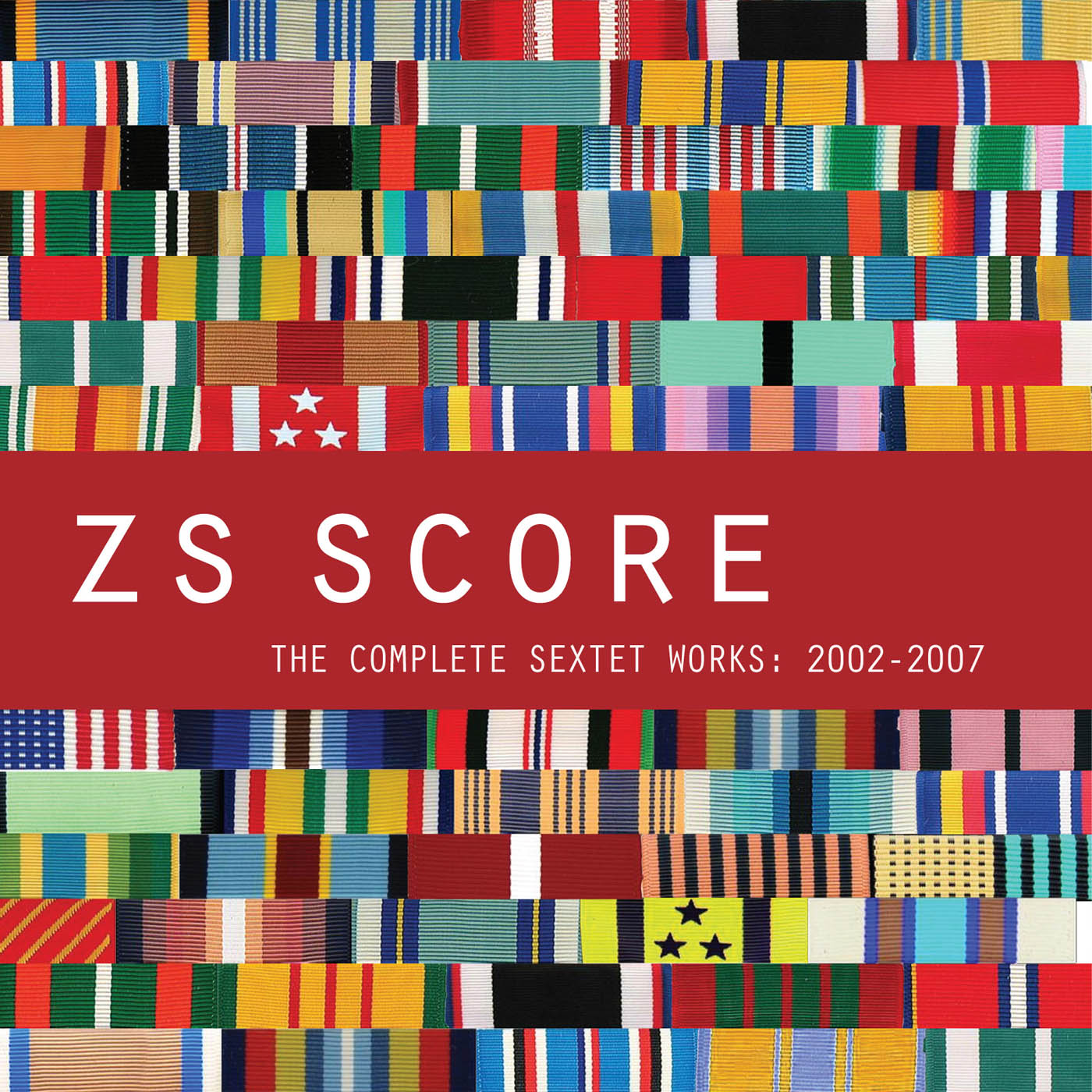 The large majority of Brooklyn based Zs' output consists of their work as a sextet—a varied body of work focused around rhythmic intensity and textures based on duality. To reexamine the group's early recordings is to make a sonic map of the changing attitudes of New York new music and how the talent in the area learned to hybridize their surroundings and their musical skills. In that sense, Zs are the New York avant-garde personified; their role as a bridge between loft bands and chamber musicians, lo-fi and "high art" represents a lot of the essential artistic ideologies in 21st century New York.
The large majority of Brooklyn based Zs' output consists of their work as a sextet—a varied body of work focused around rhythmic intensity and textures based on duality. To reexamine the group's early recordings is to make a sonic map of the changing attitudes of New York new music and how the talent in the area learned to hybridize their surroundings and their musical skills. In that sense, Zs are the New York avant-garde personified; their role as a bridge between loft bands and chamber musicians, lo-fi and "high art" represents a lot of the essential artistic ideologies in 21st century New York.
- Administrator
- Albums and Singles
 The large majority of Brooklyn based Zs' output consists of their work as a sextet—a varied body of work focused around rhythmic intensity and textures based on duality. To reexamine the group's early recordings is to make a sonic map of the changing attitudes of New York new music and how the talent in the area learned to hybridize their surroundings and their musical skills. In that sense, Zs are the New York avant-garde personified; their role as a bridge between loft bands and chamber musicians, lo-fi and "high art" represents a lot of the essential artistic ideologies in 21st century New York.
The large majority of Brooklyn based Zs' output consists of their work as a sextet—a varied body of work focused around rhythmic intensity and textures based on duality. To reexamine the group's early recordings is to make a sonic map of the changing attitudes of New York new music and how the talent in the area learned to hybridize their surroundings and their musical skills. In that sense, Zs are the New York avant-garde personified; their role as a bridge between loft bands and chamber musicians, lo-fi and "high art" represents a lot of the essential artistic ideologies in 21st century New York.
My adoration for Zs began with New Slaves. Back in 2010, playing that record on a whim was one of those rare, identifiable "eureka!" moments, where I had decided immediately that I discovered something truly new. Zs struck me as a group who had cemented themselves as a unique presence through sheer hard work, combining the chops of conservatory musicians with the progressive attitudes of the modern New York scene.
Going back through their work, I was stunned to find that the group had existed in some form or another for over ten years. I had to catch up on a decade's worth of some of the most forward-thinking artistry to evolve from the Brooklyn experimental scene. Plus, the group had an output consistent enough to justify the band's lengthy career and roster changes; Zs has gone through over ten lineups and a fair amount of dynamic shifts in personality. The only constant member is saxophonist Sam Hillmer, with past players including Alex Mincek, Ian Antonio, Matt Hough, Ben Greenberg, Charlie Looker, and a few others in shorter tenures.
Score collects over four and a half hours of Zs music, and I can't be happier about it. It includes each recorded album of the band between 2002 and 2007—comprising Zs, the Karate Bump EP, Buck, and Arms—as well as some remixes from Zebrablood (Excepter's Nathan Corbin), outtakes, sketches, bonus songs, and a booklet with photos, sample sheet music, and a previously published essay on the group. The essay actually covers more than the box set itself contains, but as a document for tracking the evolution of Zs' lineup and outlook, it is unmatched. The four discs, meanwhile, capture a band in the throes of a creative outburst; building a sound from scratch, then allowing it to find its niche while simultaneously pummeling its point into your head over and over.
Zs' signature sound might seem a little contrived when experiencing it without context. The basic idea follows: take the rigidity and traditions of conservatory-taught chamber music and apply them, as strictly as possible, to the irreverence of free jazz and avant-garde music. Then, depending on the instruments at play, and the skill of their performers as producers, adjust where necessary. As it happened, Sam Hillmer and Alex Mincek were talented—insanely talented, enough so that this formula blossomed into a whole unique form, instead of being cast off as another high-concept novelty.
Considering how much forethought is at work here, Zs' music is best dealt with song by song. The punctual "thump" sound prevalent in their early work serves as the defining characteristic of the group. What Hillmer calls the "textured jab" is a thematic continuum based on sheet-read abstract rhythms which sets Zs songs up for their more engaging ideas and idiosyncrasies, such as the minimalist textures of "Bump," the collapsing structures of "Olympics," and the angular climaxes of "Pendulum." On its own, the acrobatics of songs like "Woodworking" tend to lull under their own weight, but when applied to different chord progressions and driven by overarching themes, Zs' music produces an uncanny bliss. One of the shining moments for the group is "Nobody Wants To Be Had," a cathartic assault where each member plays in exact unison, chopping up the syllables of a surrealist poem between passages of pounding noise rock.
Arms is still the sextet's opus, where songs like the exhaustive "I Can't Concentrate" conjure (and then mercilessly drown) a whole new language of songwriting in ten or so minutes. Notable is the one glaring misdirection in their otherwise consistent oeuvre, the self-titled "Zs," a composition of pleasant rhythmic undulations and overlapping vocal harmonies highlighting lyrics such as "Zs are a band of mystical bros." The song appears to be a post rock pastiche, although it works surprisingly well as a self-effacing anthem too.
Aside from the prototypes and remixes (which are pleasant and forgettable), what stands out on this compilation is the live material culled from Buck, released back in 2007. It shows off their indisputable skill as live performers, but also finds time to lend their music some well needed levity. Notable moments left in the live versions include the pained preaching of a fan to "give them some fucking money...pass around a hat" on "Pendulum" and the oddly-well-recorded heckling near the end of "Bump," where someone is audibly heard yelling "Slayer!" and "Sheet music rules! Fuckin' college!" to the chagrin of the audience.
In fact, I have come to love Zs more as a group while exploring their old catalog because of their humor in tackling such stringently orchestrated music. Along with the self-titled "Zs," songs like "Retrace A Walk" and "Woodworking" seem pointedly, comically literal, and the band's own lighthearted appraisal of Howard Stern's sarcastic mock-up of their sound ("One of the pieces they did was pretty good") is all too endearing.
Zs began as a collection of individuals with distinctive, angular tastes. These days, it has evolved into a band aesthetic, a studio project, and a conceptual goldmine for minimalist side projects and over sized Playbutton pins. But Score captures where the group earned their stripes: through hard work, constant practice and improvement, a sense of perspective, and a willingness to explore areas of music that few others had the wherewithal to. It has quickly earned a place as one of my favorite releases this year, and I hope that Northern-Spy's dedication to putting it out will mean the same for a plethora of potential fans.
Read More
 After a terrific debut EP in 2010, Bell Gardens finally return with a full album of mostly new music. As usual, the musical arrangements are lush and saturated with beauty as Brian McBride and Kenneth James Gibson try to recreate the moods and sounds of the golden era of pop studio recordings without using the typical computer-based short cuts and technological workarounds that have become de rigour for modern studio work. The end result is a triumph of song writing, musicianship and integrity, highlighting just how good humble songs can be without the need for following trends or to be striving to be the next big thing.
After a terrific debut EP in 2010, Bell Gardens finally return with a full album of mostly new music. As usual, the musical arrangements are lush and saturated with beauty as Brian McBride and Kenneth James Gibson try to recreate the moods and sounds of the golden era of pop studio recordings without using the typical computer-based short cuts and technological workarounds that have become de rigour for modern studio work. The end result is a triumph of song writing, musicianship and integrity, highlighting just how good humble songs can be without the need for following trends or to be striving to be the next big thing.
- Administrator
- Albums and Singles
 After a terrific debut EP in 2010, Bell Gardens finally return with a full album of mostly new music. As usual, the musical arrangements are lush and saturated with beauty as Brian McBride and Kenneth James Gibson try to recreate the moods and sounds of the golden era of pop studio recordings without using the typical computer-based short cuts and technological workarounds that have become de rigour for modern studio work. The end result is a triumph of song writing, musicianship and integrity, highlighting just how good humble songs can be without the need for following trends or to be striving to be the next big thing.
After a terrific debut EP in 2010, Bell Gardens finally return with a full album of mostly new music. As usual, the musical arrangements are lush and saturated with beauty as Brian McBride and Kenneth James Gibson try to recreate the moods and sounds of the golden era of pop studio recordings without using the typical computer-based short cuts and technological workarounds that have become de rigour for modern studio work. The end result is a triumph of song writing, musicianship and integrity, highlighting just how good humble songs can be without the need for following trends or to be striving to be the next big thing.
Despite the deliberate avoidance of software and samples, Bell Gardens manage to begin the album with a very modern sounding take on the classic pop song. Following some gorgeous slide guitar on "Clinging to the Almost," there is a sudden move into the sort of chord progressions that I would associate with Stars of the Lid or McBride’s solo work. Though Stars of the Lid never sounded like this; the movement and the atmospheres are social, joyous and bright unlike the introspective, contemplative twilight textures of Stars of the Lid. I thought they had nailed it on Hangups Need Company but they have upped their game considerably on Full Sundown Assembly.
The first couple of times I listened to "Differently Tonight" I felt that the lyrics, though performed perfectly, were a bit clumsy. Now, after becoming more comfortable with the album as a whole, I admit I feel differently. The lyrics are so simple that they seemed too obvious but I realize now that is what makes the song work so well. This deceptive simplicity runs throughout the rest of Full Sundown Assembly with songs like "Bobby" and "Nowhere" sounding like the best bits never recorded by Crosby, Stills, Nash and Young or Brian Wilson.
The highlight of the album is "Through the Rain," which also featured on the duo’s Hangups Need Company EP from 2010. Here is the closest they come to sounding like The Beach Boys, the vocal harmonies are rich, layered but as light as they air they are made from. In fact, this is probably the best-crafted song I have heard in a long time as absolutely everything about it is balanced, tasteful and moving. It is a sheer delight to listen to and even though it has already been released, I will not argue with its inclusion here.
In recent years, Bon Ivor and Fleet Foxes have tried to capture this sort of vibe in their respective careers but Bell Gardens truly school them in how it should be done. McBride and Gibson have created stunning bursts of warm, joyous harmonies that, while indebted to great artists such as Phil Spector and Jack Nitzsche, burst with a life beyond retro pastiche. This is masterfully played pop music that references but expands on this nostalgia, much like Tindersticks did in the ‘90s with their take on Nancy and Lee, John Barry and Serge Gainsbourg (though Bell Gardens give the ‘sticks a run for their money on "South"). With Full Sundown Assembly, McBride and Gibson have created masterfully played pop music which is a much needed ray of sunshine on these dark autumn mornings.
samples:
 
Read More
 After a terrific debut EP in 2010, Bell Gardens finally return with a full album of mostly new music. As usual, the musical arrangements are lush and saturated with beauty as Brian McBride and Kenneth James Gibson try to recreate the moods and sounds of the golden era of pop studio recordings without using the typical computer-based short cuts and technological workarounds that have become de rigour for modern studio work. The end result is a triumph of song writing, musicianship and integrity, highlighting just how good humble songs can be without the need for following trends or to be striving to be the next big thing.
After a terrific debut EP in 2010, Bell Gardens finally return with a full album of mostly new music. As usual, the musical arrangements are lush and saturated with beauty as Brian McBride and Kenneth James Gibson try to recreate the moods and sounds of the golden era of pop studio recordings without using the typical computer-based short cuts and technological workarounds that have become de rigour for modern studio work. The end result is a triumph of song writing, musicianship and integrity, highlighting just how good humble songs can be without the need for following trends or to be striving to be the next big thing.
- Administrator
- Albums and Singles
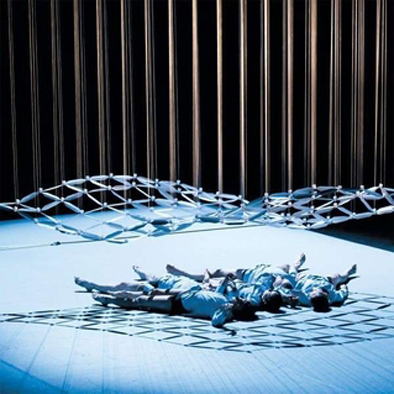 The worlds of dance and experimental guitar music rarely intersect (for good reason, probably), but the artistic director of Australia's Chunky Move company had a wild enough imagination to bring Ambarchi and abstract electronics maniac Robin Fox together to compose this soundtrack.  In many ways, that gamble paid off handsomely, as Connected is surprisingly inventive, challenging, and divergent (and no doubt inspired some very unusual choreography).  As a purely audio experience, however, it is pretty tame and comparatively characterless by either artist's normal standards.
The worlds of dance and experimental guitar music rarely intersect (for good reason, probably), but the artistic director of Australia's Chunky Move company had a wild enough imagination to bring Ambarchi and abstract electronics maniac Robin Fox together to compose this soundtrack.  In many ways, that gamble paid off handsomely, as Connected is surprisingly inventive, challenging, and divergent (and no doubt inspired some very unusual choreography).  As a purely audio experience, however, it is pretty tame and comparatively characterless by either artist's normal standards.
The five pieces that compromise this album are dramatically different stylistically and subverted my expectations at every turn.  That may sound great, but my expectations included thoughts like "this will sound kind of like Oren Ambarchi" and "this will not be puzzlingly schizophrenic."  Consequently, my first impression of Connected was not favorable.  That impression gradually changed to "grudging admiration" with future listens, but I still have a hard time accepting how much the distinctive aesthetics of Fox and Ambarchi are either watered-down or presented with no clear evidence of collaborative influence.
That said, the kinetic opening piece, "Standing Mandala," is arguably the album's clear highlight and the most fully-realized melding of the duo's guitars and electronics.  Over an insistently throbbing and burbling electronic pulse, Ambarchi gradually escalates in intensity from rhythmic clicking and a pedal tone to well-placed snarls of feedback and guitar noise.  It ultimately culminates in a crescendo of insectoid hiss and chittering from Fox before ending abruptly at around nine minutes.  Aside from the sudden ending, it is a pretty masterful display of how to slowly and enticingly build tension.
Unfortunately, that momentum is killed instantly by "Game of Two," a piece that I still have very mixed feelings about.  If I am in a mood where I can listen intently and appreciate nuance and subtlety, I can definitely hear some beauty in the way that Ambarchi's lazily strummed chords dissipate into feedback and creaking strings.  When I am not in that mood, it basically sounds like someone playing an uninteresting chord progression extremely slowly for eight interminable minutes.  I am more frequently in the latter mood.
"Connected" follows in similarly frustrating fashion, only this time it is Fox's turn to take center stage.  Again, the music is relatively static, consisting almost entirely of sustained hums, whines, and sub-bass tones.  In the foreground, there are occasionally sounds that resemble quavering, electronically processed bells.  In the context of a dance performance, I imagine its near-silence could be quite intriguing. Sonically, however, it is the album's nadir, as there is nothing compelling about it for me at all.
The proceedings liven up quite a bit as the album draws near the end though, as the comparatively brief "Trios" sounds like traditional clicking-and-blurting Robin Fox-style electronic chaos with some buried gnarled guitar noise thrown in.  Hopefully, there is footage of the performance somewhere, as I  cannot even begin to imagine what the associated dancing would look like.  I suspect it was epic.
That howling climax is then followed by the droning, discordant coda of "Invigilation," which combines dense layers of oscillating synths into a queasily, heavy thrum.  It's a pretty likeable slab of drone, certainly, but it is pretty hard to see anything distinctively Fox- or Ambarchi-esque about it.  That, essentially, is Connected's biggest problem: generally, pieces either sound like passable Fox, sub-par Ambarchi, or neither.  Only "Standing Mandala" comes close to blending their two distinct personalities together.
Critiquing an album like this one feels a bit frustrating and pointless, as the music has been completely decontextualized from its intended purpose–this is merely one element of a complete work.  Based upon the bizarre moods and willful absence of traditional rhythm here, I suspect Chunky Move's performance was a strange and memorable one, but I do not understand the purpose of a disembodied soundtrack album.  Artistically, Fox and Ambarchi managed to provide a dance company with something quite unique and inspiring while intermittently finding a fertile creative common ground for their disparate styles.  As a musical document, however, Connected is too restrained and compromised to rank very highly in either artist's oeuvre.
 
 
Read More
- Administrator
- Albums and Singles
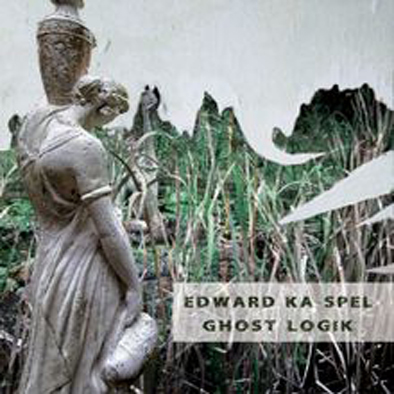 My opinion of Edward Ka-Spel has undergone a dramatic overhaul over the last few years, as the last several albums that I have heard have all floored me with at least one song (often more).  While he has been admirably devoted to making weird, uncompromising psychedelia for more than 30 years, he seems to be making some of the best and most disturbing music of his career right now (as evidenced here).  That is not to say that he has become dramatically less indulgent or difficult (unlikely to ever occur), but the high points of Ghost Logik are truly mesmerizing, haunting, and unique.
My opinion of Edward Ka-Spel has undergone a dramatic overhaul over the last few years, as the last several albums that I have heard have all floored me with at least one song (often more).  While he has been admirably devoted to making weird, uncompromising psychedelia for more than 30 years, he seems to be making some of the best and most disturbing music of his career right now (as evidenced here).  That is not to say that he has become dramatically less indulgent or difficult (unlikely to ever occur), but the high points of Ghost Logik are truly mesmerizing, haunting, and unique.
The more I listen to Ka-Spel's work, the more i seem to fall in love with his voice.  While it can certainly be shrill and maniacal-sounding sometimes (he has sounded like a crazed elf in the past), both his deep, resonant speaking voice and his lazily lilting singing voice can be enormously evocative and affecting.  The latter effect is most evident on Ghost Logik's most conventional song, "Throwing Things," where Ka-Spel makes otherwise mundane lyrics feel imbued with cryptic menace.
His vocals have an almost sing-song, nursery rhyme tone to them, which contrasts creepily and surreally with the shimmering and skittering melancholia of the music.  Of course, Ka-Spel is even more powerful when his words are as disturbing as his delivery, as they are on the album's highlight, "The Voyeur."  The accompanying music is little more than some minimal droning and crackling, but Edward's monologue is unwaveringly gripping and spine-chilling–except when it is darkly hilarious ("you...really...need..to..get...out...more.").
Most of the other songs occupy a similar "uneasy soundscape and spoken word" aesthetic territory, but the balance between storytelling and atmosphere varies quite a bit from piece to piece.  The disquieting tug-of-war between childlike simplicity and macabre sophistication persists in varying manifestations throughout the entire album, creating a unifying theme of sorts.  The feeling of entering someone else's already-unfolding nightmare is yet another (even stronger) theme.  In fact, that may be where Ka-Spel's true genius lies, as he is at his best when he drops into an enigmatic and vaguely sinister scenario, patiently and masterfully escalates the tension and dread, then ends it all with a darkly funny or ominously ambiguous turn of phrase.
It is remarkable that that "formula" works as often as it does, but Edward has a seemingly inexhaustible supply of such bizarre situations and unravels his tales with perfect timing and pacing.  No one else could make these songs work, as their success is irrevocably intertwined with the gravity of Ka-Spel's voice and his knack for pregnant pauses and hesitations.
The catch–there's always a catch–is that Edward's inexhaustible supply of dreamlike vignettes is not quite able to keep up with his prolific output.  Consequently, Ghost Logik is a somewhat insubstantial album (albeit very a cohesive one).  While "Throwing Things" and "The Voyeur" are both mesmerizing and perfectly realized, the remaining six songs are comparatively a mixed bag.  Two are only about a minute long, and several of the remaining four blunt their more inspired passages with some significant bloat.  They still definitely have their share of striking or chilling moments though, particularly "So What?" and "Brighton Line."  Also, they are surprisingly listenable, as only the 13-minute "Brighton Line" manages to grate on me with an extended jazz/quasi-beat poetry section.  It would be great if Edward could slow down long enough to make an entirely brilliant album rather than a partially brilliant one, but I am more than happy to settle for two amazing songs and a handful of very good soundscapes.
(Note- there are actually three versions of this album.  The "limited box" includes a second disc (Spectrescapes) featuring more abstract/longform ambient pieces, while the "deluxe limited box" also includes a third disc and a short film.)
Samples:
 
 
Read More
- Administrator
- Albums and Singles
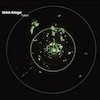 Despite knowing Ulrich Krieger from a number of recordings, this is the first time I have heard one of his own compositions. Based on his work with Phill Niblock, Steve Reich and Zeitkratzer, I am not surprised by the form of Fathom (long tones, deliberate use of dynamics and a geological approach to timing) but I am surprised at how he has managed to take all his previous experience and influences and craft a truly original piece of music.
Despite knowing Ulrich Krieger from a number of recordings, this is the first time I have heard one of his own compositions. Based on his work with Phill Niblock, Steve Reich and Zeitkratzer, I am not surprised by the form of Fathom (long tones, deliberate use of dynamics and a geological approach to timing) but I am surprised at how he has managed to take all his previous experience and influences and craft a truly original piece of music.
Fathom was commissioned by Sub Rosa for their new Framework series of albums. Each of the releases in this series feature a geometric pattern on the back of the sleeve and in Fathom’s case, the pattern has a Rorschach inkblot quality to it. This is fitting as Krieger’s piece has a lot in common with Rorschach’s open-ended visual stimuli. The role of the inkblots in therapy is to facilitate the patient’s dialogue with the therapist by giving them a starting point to begin describing their own thought processes. Abstract art has acted in a similar, if less directed way, and sound art too has this open, interpretive aspect to it. Fathom certainly leaves much to the imagination, depending on my mood the sounds range from being warm, womb-like and relaxing to being sinister, dangerous and arousing, much in the same way that a Rorschach inkblot could be both a demon and a flower depending on the inclination of the viewer.
Krieger’s composition also has an inkblot quality in its symmetrical structure. Two electric guitars (played by Krieger’s companions in the group Text of Light, Lee Ranaldo and Alan Licht) initially form the focus of the piece, gently strummed harmonics shining bright in the middle of the darkness (represented by Krieger’s long, slow blows on the saxophone). Tim Barnes’ atmospheric percussion completes the picture, filling it out to the edges. Yet halfway through, this suddenly and almost subconsciously switches around with Barnes becoming the central point of the music, striking more bell-like instruments while Ranaldo and Licht move to a more vague and impressionistic mode of playing.
The line "Like flying through liquid space" adorns the back of the album and I honestly cannot beat that description when it comes to this music. It does feel like I am being pulled through some other, previously imperceptible dimension of reality for as long as the music is playing.
sample:
 
Read More
- Administrator
- Albums and Singles
Press release:
Unique mix of ambient, industrial, experimental trip hop, jazz and electronica: Formed in a dingy Melbourne warehouse at the turn of the century, TERMINAL SOUND SYSTEM began as a vehicle for Skye Klein, half of Relapse Records cult doom/noise duo HALO, to explore his interest in experimental electronic music and Dub. Eight albums later, TSS has expanded to include live instrumentation and synchronious video projection, merging epic doom, post-rock and jazz with electronica, drum'n'bass and heavy dub into a style wholly unique. Ostensibly a studio project, Terminal Sound System takes on new life as a live entity, infusing hyperprecise digital audio with the energy of rock& metal, all presented before synchronised video projection.
TERMINAL SOUND SYSTEM's ninth album - the first for Germany's Denovali Records - called HEAVY WEATHER kicks the doomy shoegazing headphase into top gear, draping layers of detuned drone& dissonance over beds of swampy synths and meticulous rhythms. Created over a period of a year using everything from custom-programmed software instruments to a miced-up room full of feeding back amplifiers, HEAVY WEATHER represents the ultimate realisation thus far of Klein's mission with TSS: complete and uncompromising immersion.
Release date: May 13, 2011
Stream: www.denovali.com/terminalsoundsystem
Band page: www.terminalsoundsystem.com
Read More



